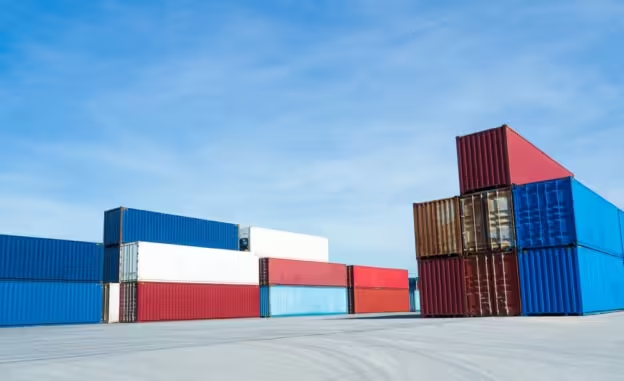Shipping containers are practically everywhere. We’ve all seen them on trucks, trains, ships, and stacked high in ports. This constant exposure to the elements begs the question: are shipping containers waterproof?
It’s a valid concern, considering what they endure while hauling cargo across vast oceans or facing the scorching sun, driving rain, and salty air. Wouldn’t it be unsettling if these steel giants weren’t as watertight as we assume?
Unpacking the Truth: Are Shipping Containers Waterproof?
The short answer is: yes, metal shipping containers fresh from the factory are designed to be watertight. However, like any equipment constantly exposed to the elements, a container’s ability to stay watertight can diminish over time. Let’s take a closer look at why that happens.
Construction Plays a Key Role
The International Convention for Safe Containers (CSC) sets the standards for container design, construction, and testing. These guidelines ensure that new containers are built to withstand the rigors of sea travel, including protection against water.
Containers are constructed from Corten steel, known for its corrosion resistance, and feature a rubber gasket along the inside of their double doors. This gasket creates an airtight and watertight seal when the doors are properly closed and locked.
What Impacts Their Waterproofing Ability?
Even though new shipping containers are watertight, several factors can affect their ability to keep out water over time:
1. Wear and Tear
Containers are the workhorses of global trade. They’re loaded, unloaded, stacked, and exposed to harsh environments. Over time, this exposure leads to rust and corrosion, which can weaken a container’s watertight seal. Door gaskets wear out, and tiny holes in the walls or roof can allow water to seep in.
Regular inspections and anti-corrosion coatings help extend the lifespan of shipping containers, ensuring their continued water resistance.
2. Modifications Matter
Turning a shipping container into an office, home, or shop often requires modifications like adding windows, doors, or vents. While these changes improve functionality, they can compromise the container’s watertight integrity if not done properly.
Poorly sealed windows or incorrectly installed doors and vents create pathways for water to enter. Ensuring modifications are done by professionals helps maintain the container’s original protective properties.
3. Condensation—The Silent Culprit
Even a structurally sound container can face issues with condensation. When warm air inside a container hits the cold steel walls, condensation forms. This can lead to dampness, mold, and potential damage to your cargo.
Proper ventilation is key to preventing condensation build-up inside your container.
Addressing Common Concerns
Can Shipping Containers Withstand a Flood?
Shipping containers are designed to handle sea travel but aren’t necessarily flood-proof. Prolonged submersion, especially in a severe flood, can place pressure on the container’s walls, roof, and doors. While they are more resistant to flood damage than traditional buildings, raising the container on a sturdy foundation is advised for those in flood-prone areas.
Can Water Get Into Shipping Containers from the Ground Up?
Placing a container directly on the ground can lead to moisture seeping in from below. A gravel bed or a sturdy foundation helps improve drainage and air circulation, preventing water damage from below.
What If I Find a Leak?
Leaks can happen, particularly with older containers. Common sources include rust, damaged door seals, and poorly installed modifications. Depending on the size of the leak, marine-grade sealants, weld repairs, or door gasket replacements can fix the problem.
Investing in Quality: Wind and Watertight Certification
When purchasing shipping containers for sale in New Jersey, look for containers with the “wind and watertight” certification, which guarantees they meet strict international standards for structural integrity and water resistance. Always inspect documentation like a CSC plate when buying a used container to ensure it remains seaworthy.
If a container is repurposed for another sea voyage, it must go through the recertification process with the Approved Continuous Examination Program (ACEP) to ensure it maintains its watertight qualities.
Conclusion
So, are shipping containers waterproof? The answer is: it depends. New containers are built to be watertight, but factors like age, wear, and modifications can affect this over time. Regular inspections, proper ventilation, and maintenance help ensure your container stays dry.Need help finding the perfect container? Contact us at LGI Transport for questions or to learn more about our available shipping containers!

